Syngonium is a name provided for the genus of flowering plants native to tropical rainforests of central and south America, the west indies, and southern Mexico. The flowing plant belongs to the family of Araceae and you will come across a lot of Syngonium varieties that could be found outside in the forests and as beautiful houseplants in homes. Basically, they are known as woody vines that grow to the height of 10-20 meters in trees.

The Syngonium leaf shapes change according to the growth stage of the plant. The adult leaves are more lobed as compared to the immature plant which could be possibly seen in small house plants. Also, some of the species are known to be helpful to mankind and that is why Syngonium plant benefits make them even more appealing as a houseplant.
Although there are different kinds of Syngonium plants real majorly they prosper under the same care and conditions when kept at home. These plants survive between the temperature of 16 degrees Celsius to 30 degrees Celsius. They crave humidity so prefer misting them with water regularly and apart from that these plants love good light but are not too direct.
Types of Syngonium Plant
There are a lot of different types of Syngonium Plant on this earth but we are explaining some common and famous plant type which generally you can see everywhere among Syngonium lovers. These plants are
1. Syngonium Podophyllum
Syngonium podophyllum is one of the most popular varieties that you will come across while searching for Syngonium plants. The plant is also known by its other names such as “Arrowhead plant”, “Arrowhead vine”, “Goosefoot”, and “African and American evergreen”.
The Syngonium Arrowhead varieties are native to the region of Latin America, from Mexico to Bolivia and some other places including, Florida, Texas, Hawaii, and West Indies.
The Syngonium podophyllum varieties have arrow-shaped leaves which grow around 12 inches long.

Usually, the indoor plants do not bloom, however, you can witness small flowers, white or green on spadices with light-yellow via green spathes under favorable conditions
Syngonium Podophyllum Varieties
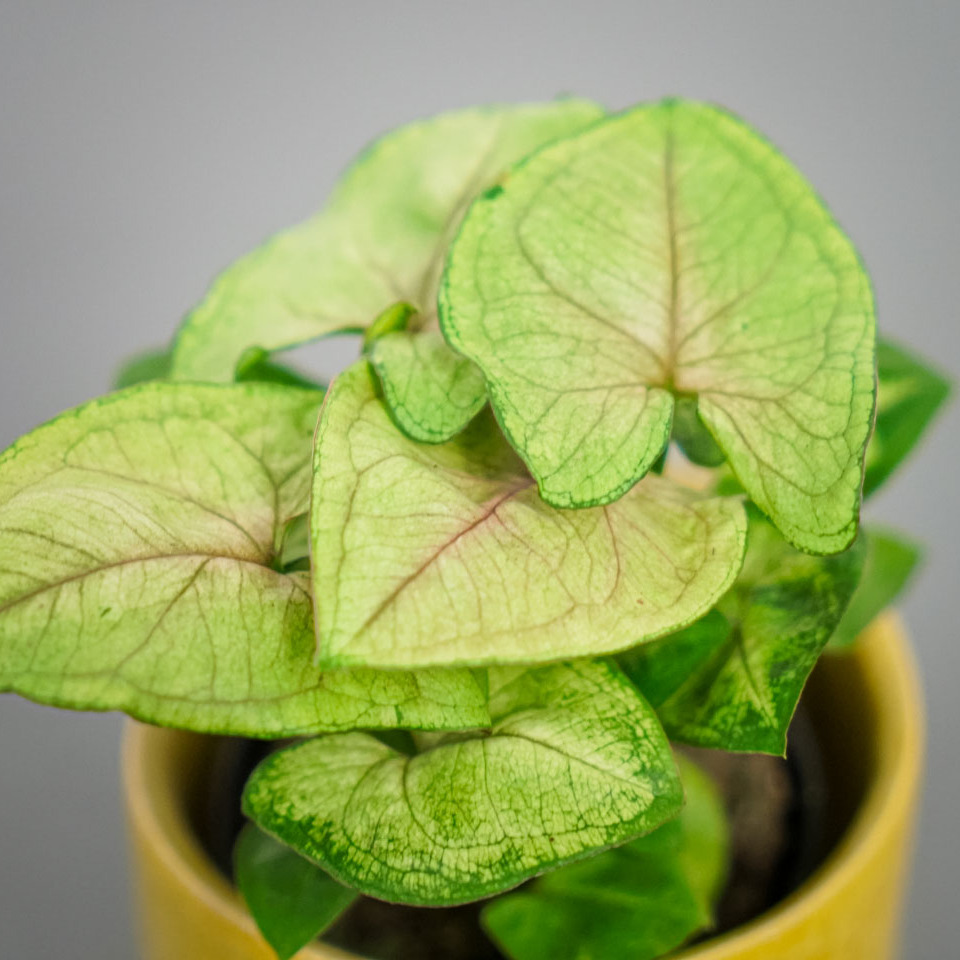
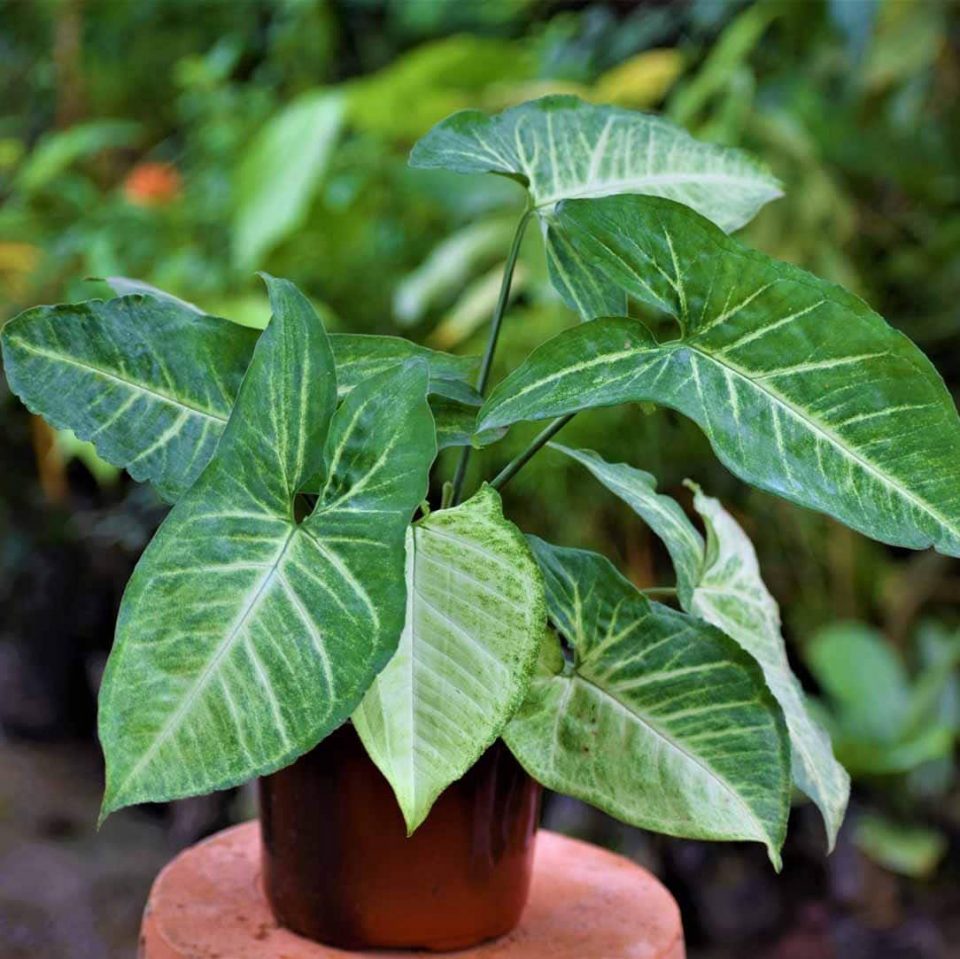

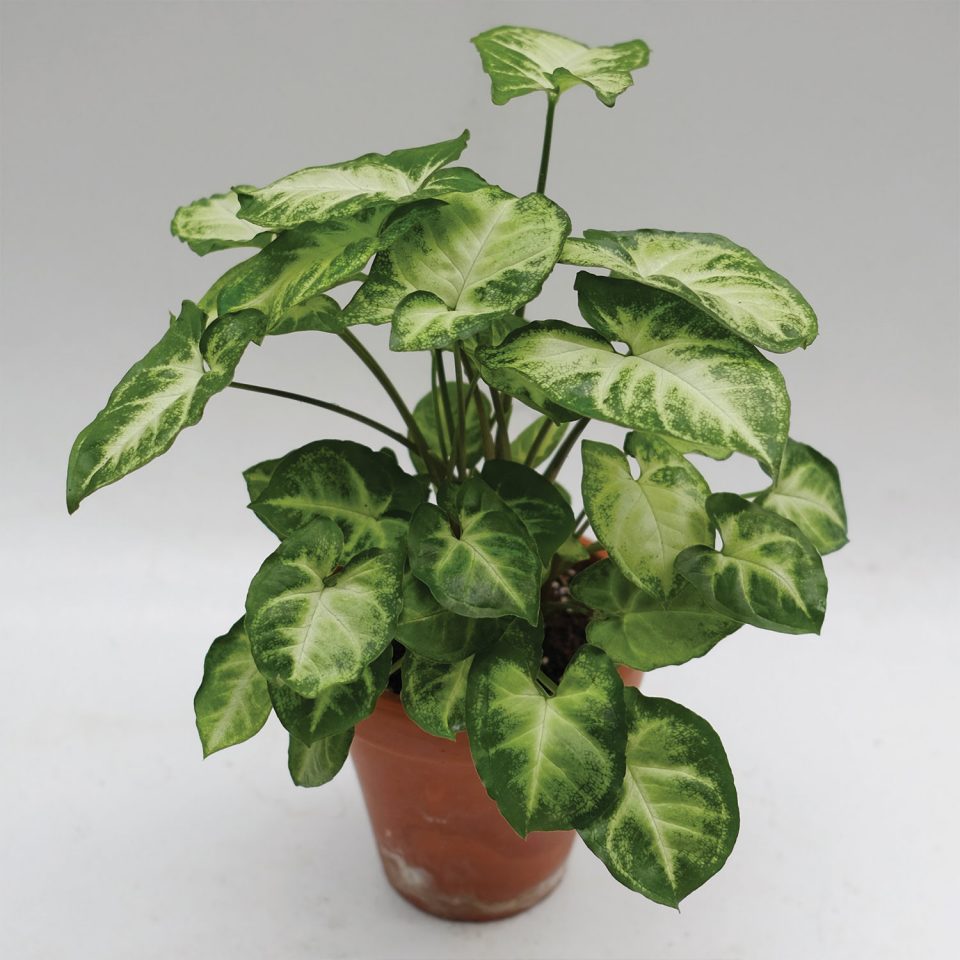
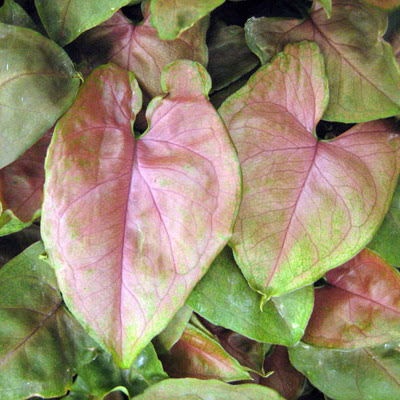
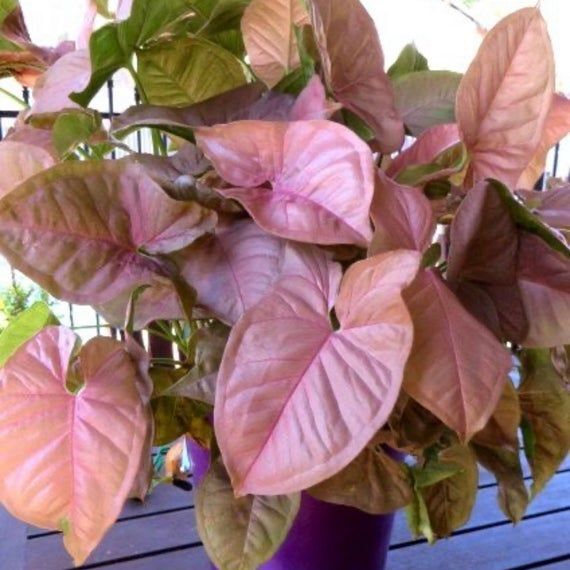
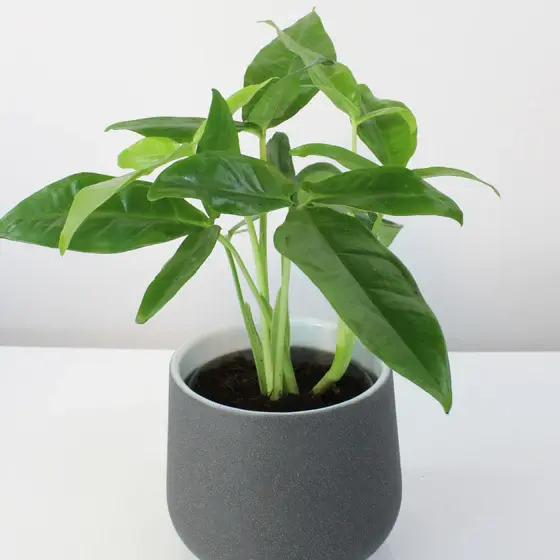

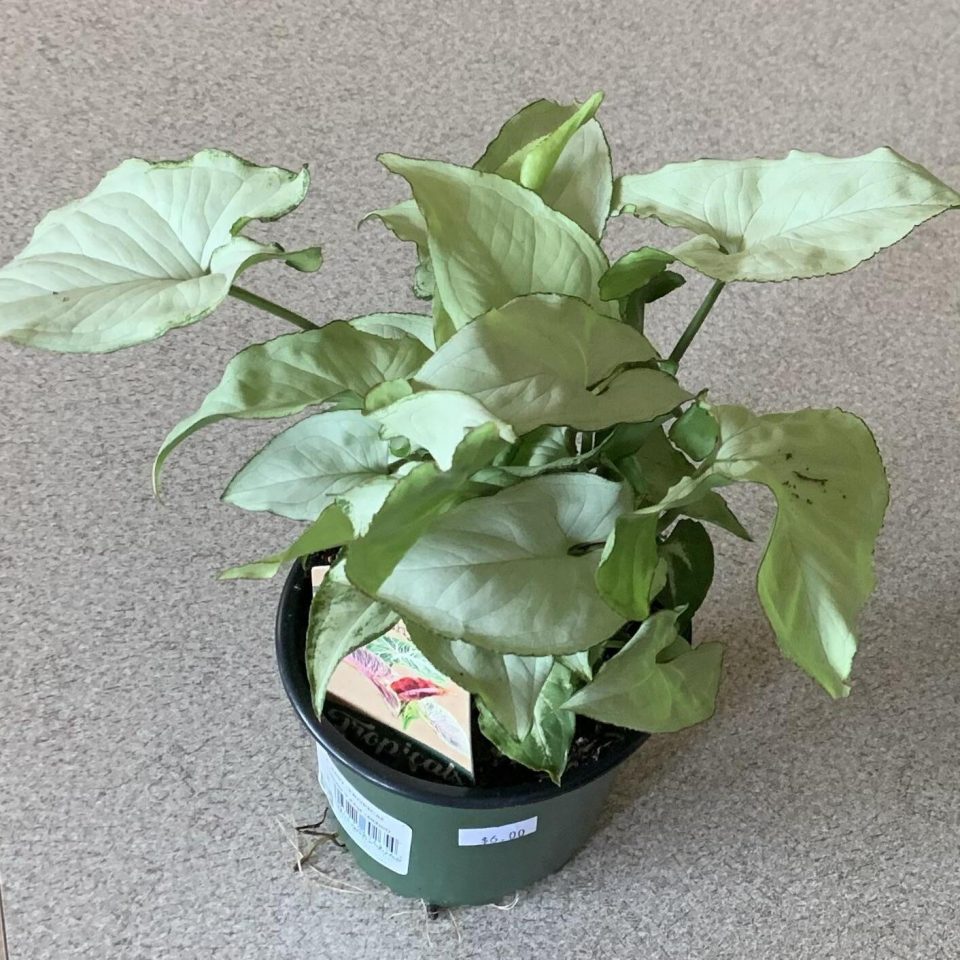
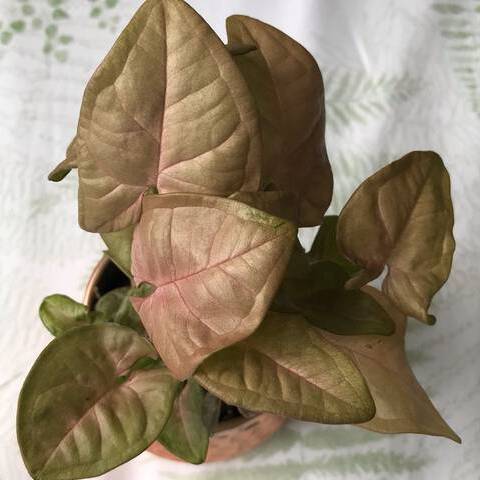
2. Syngonium Macrophyllum
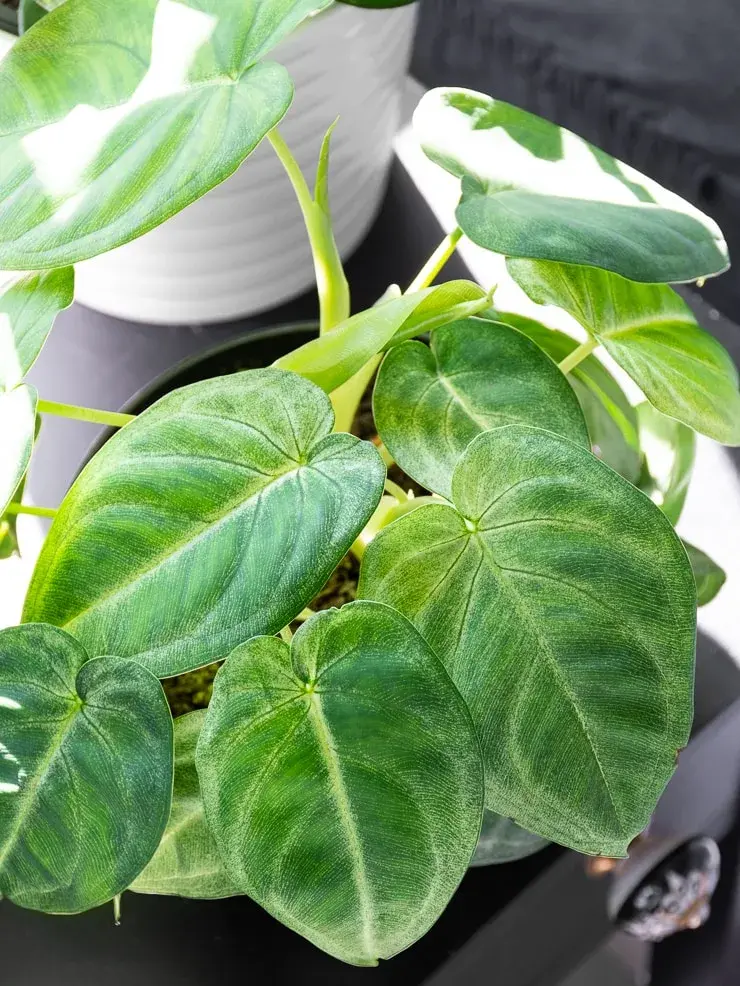
Syngonium Macrophyllum also known as the “Frosted Heart” is another most popular variety of Syngonium species. The plant gets its name as frosted heart due to the frosty coloration on the leaves.
The leaves of this plant are very different from the other varieties as they are thicker, rounder, and have a rubber texture as soon as they mature. In a mature plant, you can witness beautiful pink-colored flowers when grown under bright indirect light, with temperatures between 16-30 degrees celsius and fair watering sessions.
3. Syngonium Chiapense
Syngonium Chiapense has lush green, round, and heart-shaped leaves that attain a waxy or rubbery texture as soon as they mature. When compared to Syngonium Macrophyllum vs Chiapense, both varieties have a similar texture of leaves with a sort of similar appearance.
Also, both the species belongs to the Mexico region with blue-green stem and almost similar juvenile leaves. You can even buy a Syngonium Chiapense Variegated plant which is slightly different from the original Syngonium Chiapense due to variegated foliage.

The plant is easy to grow indoors, and you just have to ensure the plant is in bright indirect light with partial sun and appropriate watering sessions.
Syngonium Macrophyllum vs Syngonium Chiapense
| Syngonium Macrophyllum | Syngonium Chiapense |
| Syngonium macrophyllum, also known as the “giant-leaved syngonium,” is characterized by its large, glossy leaves that can grow up to 8 inches in length. The leaves are typically green with white or cream-colored variegation. | Syngonium chiapense, also known as the “Chiapas syngonium,” is a smaller species with leaves that typically grow up to 4 inches in length. The leaves are typically green with white or cream-colored variegation and are slightly less glossy than those of Syngonium macrophyllum. |
4. Syngonium Erythrophyllum
Syngonium Erythrophyllum is the rarest variety of Syngonium species and is known by other names such as “Red Arrow”, and “Llano Carti Road” plant. The plant can be kept indoors in hanging baskets and the vines of this plant can reach up to 6 feet.
The plant is particularly rare due to its attractive foliage with arrow-shaped leaves that has a waxy texture with dark green color contrasting with the maroon or red underside. However, you won’t be witnessing flowers indoors but under favorable conditions, you get to see flowers with white or green spathe and yellow spikes.
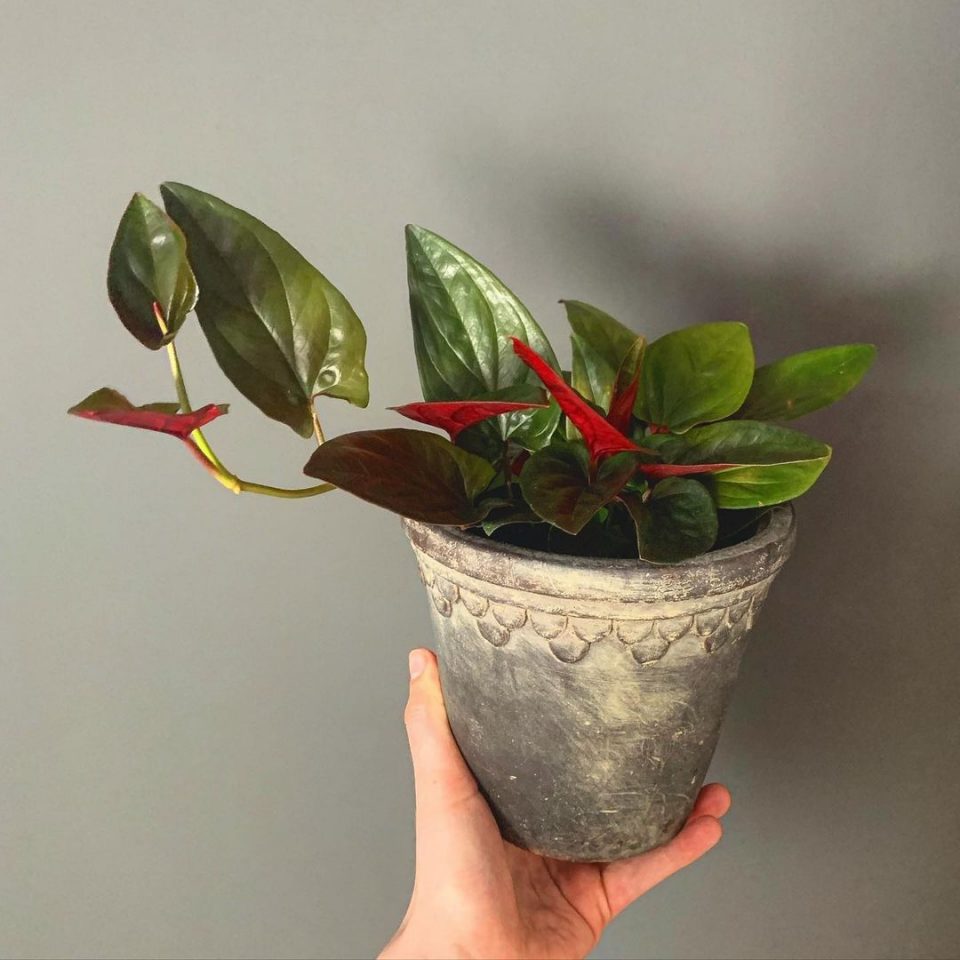
5. Syngonium Auritum
Syngonium Auritum is a beautiful and evergreen plant best known for its beautifully segmented leaves. The beautiful green leaves of this plant are arrow-shaped and look very similar to its cousin podophyllum.
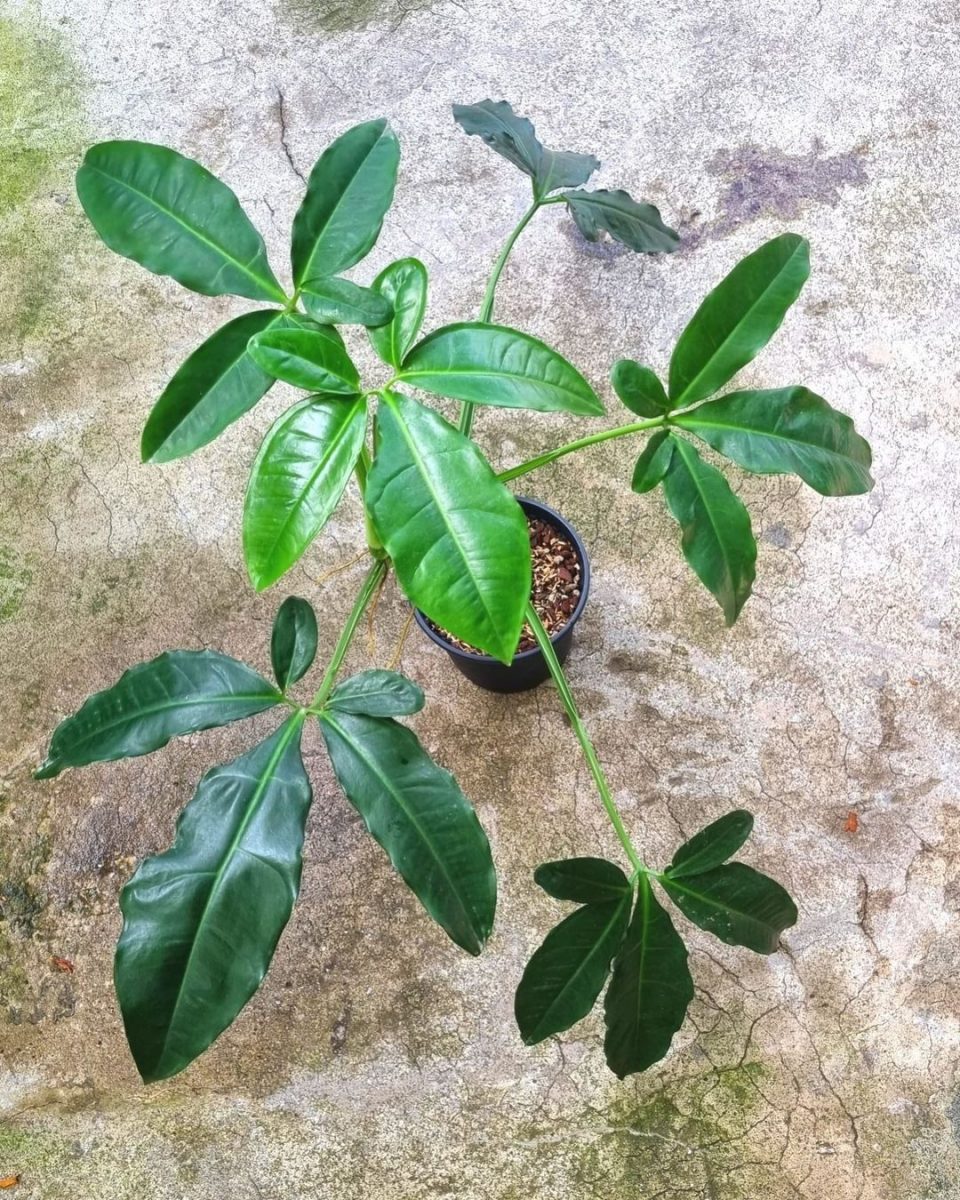
For Syngonium Auritum care, you need to keep the plant under the partial sun with bright indirect light, regular potting mix with temperature ranging between 16-30 degrees celsius. Water the plants as you see the upper layer of soil is dry and avoid overwatering.
The Syngonium Auritum flowers between June to August with a light greenish-yellow spathe.
6. Syngonium Neglectum
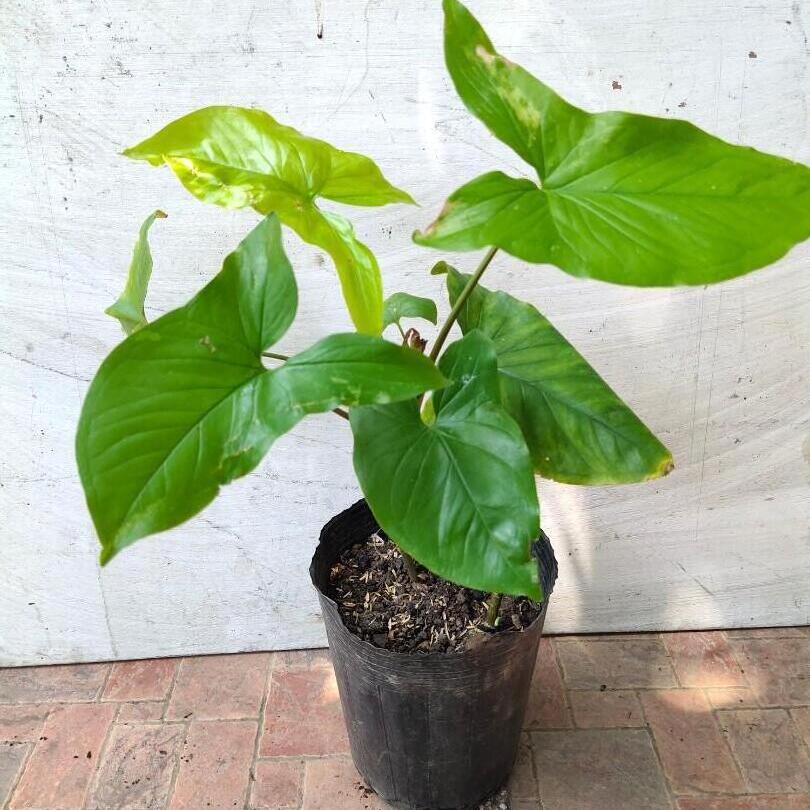
Syngonium Neglectum is an easy-growing houseplant that comes with dark green colored leaves which are triangular from the front and round from the back. The plant is native to the mountains of Mexico where it climbs over the trees and crawls over the ground.
The flowers of the plants appear on the forks of the upper leaves in a mature plant. The plant grows well when you keep moderate watering sessions and allow the soil to dry between sessions. Also, the plant likes bright but indirect light, temperatures ranging between 16-30 degrees celsius. Furthermore, the plant requires nutrient-rich well-drained soil and moderate to high humidity in the surroundings.
7. Syngonium Angustatum
Syngonium Angustatum is another Syngonium species that is known for its environmental and medicinal uses. The plant belongs to the Araceae family and is native to areas from Mexico to Colombia.
Syngonium Angustatum is also widely known by other names like the “Five Fingers” plant or “Little Star” plant in different places. Apart from that the plant enjoys full to partial sun and makes sure you let them dry between the watering sessions.
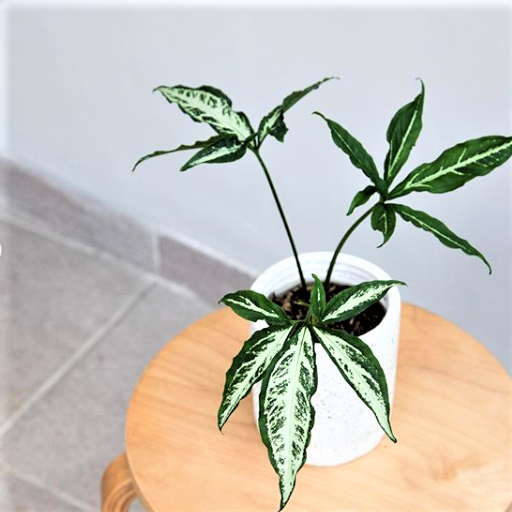
8. Syngonium Ngern Lai Ma
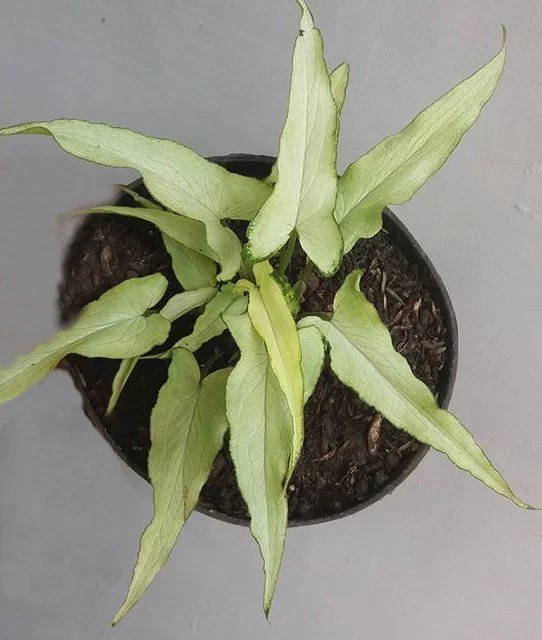
“Syngonium Ngern Lai Ma” is a cultivar of the Syngonium plant species, which is native to the tropical regions of Central and South America. The Ngern Lai Ma cultivar is known for its beautiful variegated foliage, which features green and white or cream-colored leaves.
With proper care, Syngonium Ngern Lai Ma plants can grow quite large and make a stunning display in a hanging basket or as a tabletop plant.
Frequently Asked Questions
Q1: Which is the most common variety of Syngonium plants?
Syngonium podophyllum is the most common variety among Syngonium plants.
Q2: Which is the most expensive Syngonium plant?
Syngonium Podophyllum Albo is currently considered the most expensive Syngonium plant.
Q3: Are Syngonium plants safe for children and pets?
No. All the parts of the Syngonium plant are poisonous and should be kept away from the reach of kids and pets at home.
